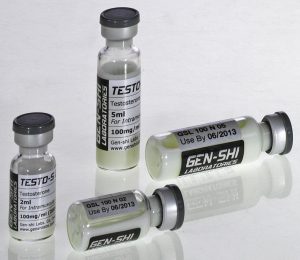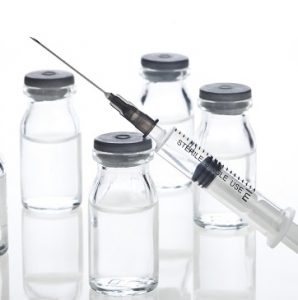Injectable Steroids
- ATP – injections and drugs in bodybuilding
 ATP is produced in the form of medical products and sports nutrition. Pharmacies can be easily obtained ATP injection – ATP amp. 1% 1ml N10. Also available are tablet form for oral administration: Fort ATP and ATP Long, who have prolonged action.
ATP is produced in the form of medical products and sports nutrition. Pharmacies can be easily obtained ATP injection – ATP amp. 1% 1ml N10. Also available are tablet form for oral administration: Fort ATP and ATP Long, who have prolonged action.
Popular bodybuilding drugs ATP:
- ATP
- Atrifos
- Sodium adenosine triphosphate
- Miotrifos
- Fosfobion
- Adefos
- Kortifos
- Striadine
- Triadenil
- Trifosfodin
- Trifosfaden
- Trifosadenin
Sports Nutrition ATP
- Elevate ATP from EPIC Preformance
- Nitro ATP from Urban Biologics
- Peak ATP With GlycoCarn by Life Extension
- Anabolic HALO by MuscleTech
- ShroomTECH Sportfrom Onnit Labs
ATP Dosage
ATP can be administered in tablet form by mouth, by injection intramuscularly, and intravenously. Depending on the range of doses.
Injections of ATP
Intramuscular injections are performed in deep muscles of the buttocks or the thigh of 10 mg (1 ml of 1% solution) 1 time per day, then at the same dose 2 times a day, or 1 to 20 mg once a day. The cycle of treatment – 30-40 injections, a second cycle – after 1-2 months. Injections of ATP are particularly soreness at the injection site, so it can be mixed with local anesthetics (lidocaine, procaine, etc.)
Intravenous injections of ATP in bodybuilding is not recommended, since it is completely inappropriate and threatening side effects such as a bradycardia (in rare cases can be a reflex cardiac arrest for a few seconds), drop in blood pressure, followed by tachycardia, reddening of the skin. Doses ATP intravenous injection should not exceed 10 mg in bodybuilding that is not enough, so avoid this method of administration.
ATP pills and sports nutrition
ATP average oral dosage of 50 – 200 mg per day, 2-4 times a day.
Effects of ATP
There is a significant difference between trying to “inject” or “eat” additional ATP (which is impossible), and in order to increase (modern dietary supplements aimed at ATP as work) the body’s ability to synthesize ATP. The second method is an effective way to increase ATP, endurance and oxygen capacity of the blood, but it does not involve the direct reception of “ATP”, and runs through the use of vitamins \ adaptogens and dietary supplements. Documented, and Olympic practice, noted a positive impact of the fungus Korditsps endurance athletes.
 Additional ATP intake does not lead to a significant rise in energy and raise the level of endogenous ATP and increases muscle mass . Injections, eating inside or under the tongue – all paths lead to the inevitable destruction of the ATP, long before entering the muscles, so there is no point to carry out painful injections.
Additional ATP intake does not lead to a significant rise in energy and raise the level of endogenous ATP and increases muscle mass . Injections, eating inside or under the tongue – all paths lead to the inevitable destruction of the ATP, long before entering the muscles, so there is no point to carry out painful injections.
After ATP enters the body (the route of administration does not matter), it does not enter the cell, since it has a negative charge. Inside the cell, the environment is also negatively charged, so the ATP just simply repelled by the cell membranes. Once in the gut or in the muscle, ATP enzyme begins to break up difosforilazoy EctoATP-AMP, it takes no more than 2-3 seconds. 3 seconds later, cAMP breaks (hydrolyses the enzyme 5-nucleotidase and adenosylhomocysteine hydrolase) to adenosine. Almost all adenosine trapped red blood cells, which quickly converted to inosine (Riboxinum) enzyme adenosine deaminase.
Thus, ATP can not be delivered to the muscles, irrespective of dosage and route of administration. Recently completely revised indications for the use of ATF agents, they are now used only for the relief of cardiac arrhythmias, and in rare cases for the relaxation of vascular smooth muscle. Effects on other organs can not be, because ATP is degraded to inosine, long before entering the bodies, namely inosine causes all the effects of ATP consumption. Therefore, it is wiser to take supplements with inosine, from which ATP is synthesized in the body.
ATF (ATF) solution
Template: Directory
The composition and the form of
1 ml of a 1% solution (0.01 g) in a vial. 10 vials per pack.
Indications
Muscular dystrophy and atrophy, poliomyelitis, multiple sclerosis, supraventricular paroxysmal tachycardia; coronary insufficiency, post-infarction kardiomiodistrofiya, acute and chronic heart failure , arterial occlusive disease (intermittent claudication, Raynaud’s disease, thromboangiitis obliterans), hereditary retinitis pigmentosa.
Recommendations for use in sport
- Maintaining cardiac activitywith considerable physical effort.
- Recovery after exercisein training the quality of endurance .
- Sports cardiomyopathy.
Dosing and Administration
Intramuscularly, intravenously or intraarterially. In the first days of treatment – 0.01 g (1 ml of a 1% solution) 1 time / day, followed by the same dose 2 times / day or 0.02 g 1 time / day. The cycle of treatment – 30-40 injections, a second cycle – after 1-2 months. To treat supraventricular arrhythmias – 0.01-0.02 g intravenously during 5-6 (effect occurs within 30-40 seconds). can be re-injected in 2-3 minutes if necessary.
Contraindications
Hypersensitivity, acute myocardial infarction, hypotension, inflammatory lung disease.
Side effects
Allergic reactions (itching, flushing of the skin). In intramuscular – headache, tachycardia, increased diuresis, hyperuricemia; by intravenous – nausea, facial flushing, headache, weakness.
Special instructions
It can not be administered in high doses, together with cardiac glycosides . Cardiac glycosides increase the risk of side effects (including arrhythmogenic action).
Tags: Injectable Steroids
